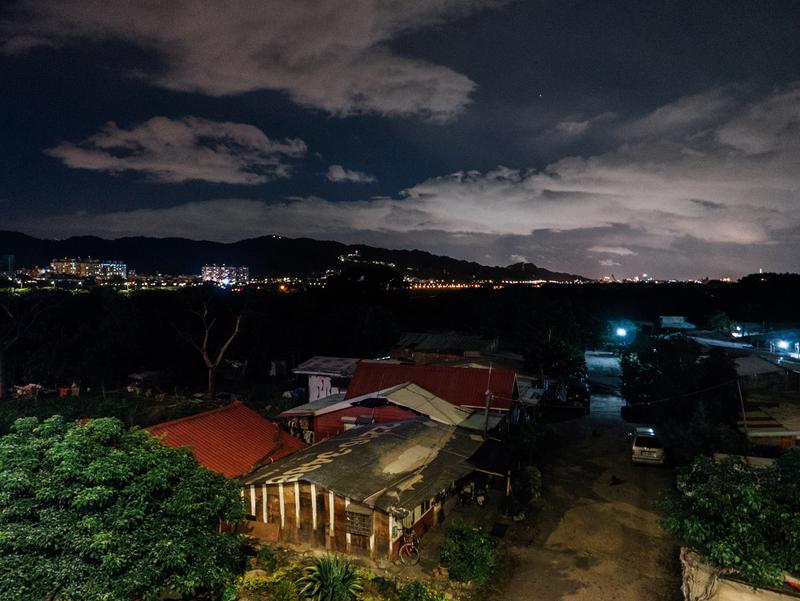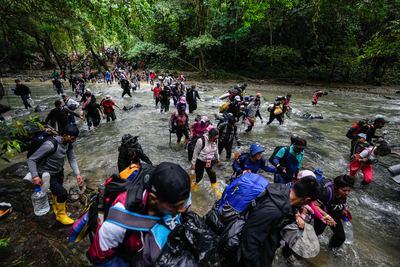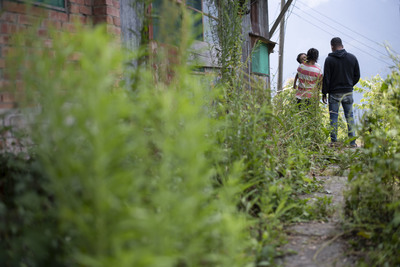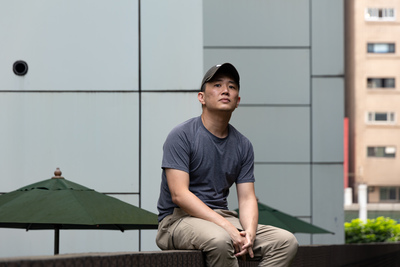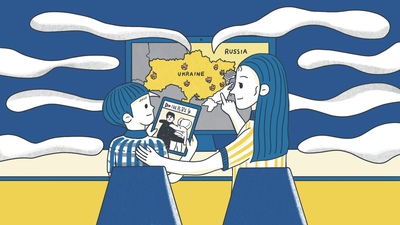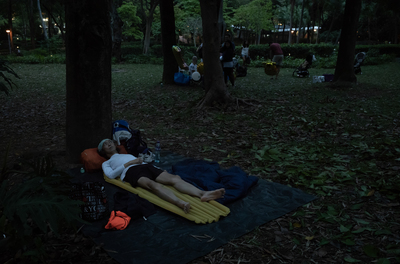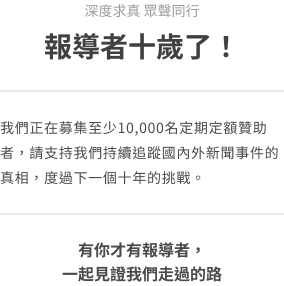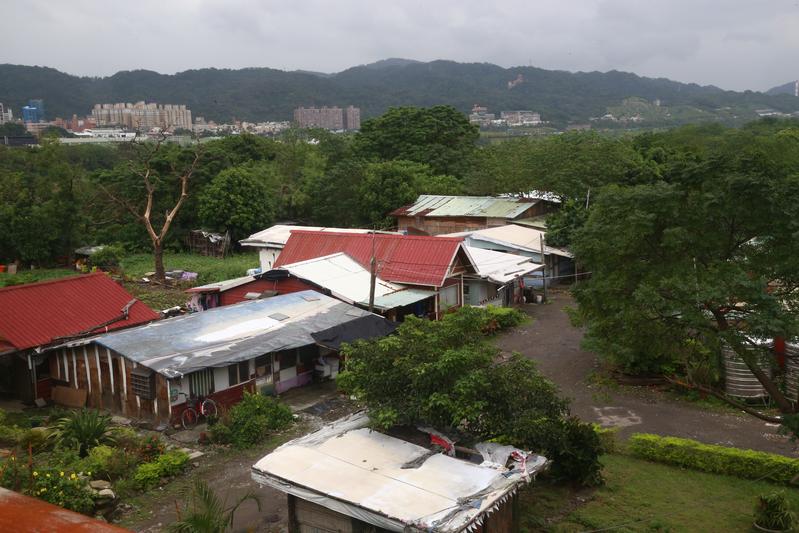
After eight years of struggle and negotiations, the 200-plus members of Sanying Tribe finally established the groundbreaking “333 model”, where the tribespeople, the local government, and the bank each contribute one-third of the funds to rebuild the settlement, making it the first urban tribal settlement nationwide.
Looking down from New Taipei’s bustling Sanying Bridge, amid the lush greenery on the banks of the Dahan River, there are a few dozen zinc-roofed houses; this is the Sanying Tribal Settlement of the Amis people. Within the meeting hall of the settlement, the walls are filled with banners from the past era of struggle: “Fight to the end”, “Return my land”. The name of every family in the settlement is even inscribed on one wall to facilitate attendance-taking for meetings.
This tiny sanctuary on the river banks settled by urban aborigines was earmarked for demolition by the government, but the Amis people wanted to stay in place, leading to several clashes between both parties. Eight years ago, the members of Sanying Tribal Settlement protested on the streets and petitioned to remain on the land; today, they have negotiated a new model of ownership with the government, called the “333 Model.” In 2017, they relocated next to National Taipei University’s Sanxia campus, creating the nation’s first urban tribal settlement.
This might seem like a fairytale ending for the Sanying Tribe, but there were many obstacles along the way.
During Taiwan’s economic takeoff in the 1960s and 1970s, many Amis people from Hualien and Taitung left their native villages and went to the north to make a living. Unable to cope with urban life and high rent, the Amis looked for river bank land similar to their home villages, built homes made of wood and zinc metal sheets, and established a settlement. In 1980, the Sanying Tribal Settlement sprung to life.
Most of the tribespeople worked in the moulding, construction, demolition, and other labour-intensive industries, and they constructed many of the buildings in the city. Some of the tribespeople lament, “We helped build the city, but the city chased us out.”
Because most of the coastal and riverbank areas belong to the state, their houses are considered illegal settlements. Moreover, the houses lie in a water catchment area where erecting housing is forbidden, and there are safety concerns due to possible flooding. The local government took measures to evict the settlers, but did not have a plan to resettle them.
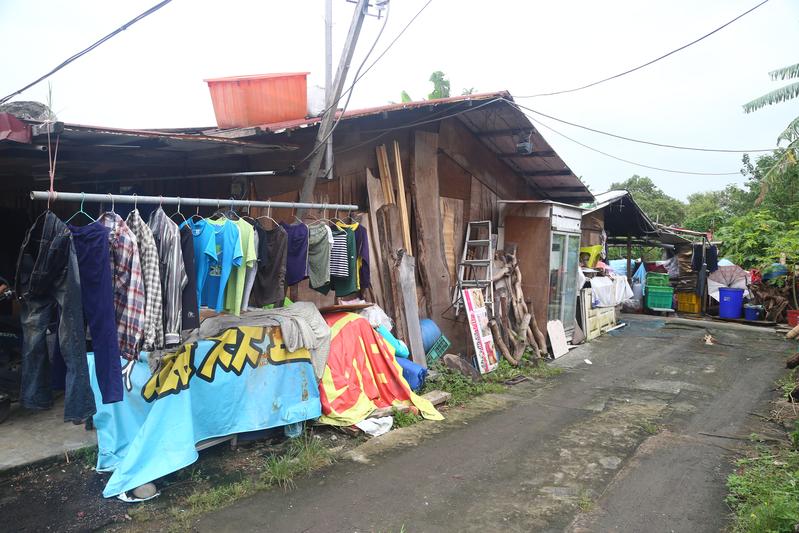
In 1994, the Taipei County government (now the New Taipei City government), citing its flood prevention policies, told settlement residents that their houses violated building codes and must be relocated. Between 1994 and 1996, the Sanying Tribal Settlement was demolished four times or more. However, after each demolition, the tribespeople would rebuild their houses and resettle in the same place within a few days or weeks, until the municipal government proposed resettling the tribe in government housing in 2002.
The “Sanying Longen Section Aboriginal Temporary Settlement” was completed in 2007 with 150 units in the hopes of resettling the tribespeople. However, the occupancy rate was low because they were unused to high-rise living, they lacked autonomy, and the rental payment situation was poor.
Chen Mei-Lan (陳美蘭), head of the Sanying tribe, recalls that only half of the tribespeople, comprising around 30 households, decided to move into the government housing. Only fewer than ten households are left. Due to legal restrictions, those who left the settlement are no longer able to move back, and now do not know where to move.
“It was like a school over there, with common corridors,” said Chen. “It was unlike the proper houses of the countryside.” Chen said that although all the residents in the government housing were indigenous peoples, not all of them were Amis, and the cultural habits and lifestyles of each group was different. “The Sanying settlement was rundown, but at least it had a human touch.”
In 2008, under former mayor Chou Hsi-wei (周錫瑋), the Taipei County government frequently pushed for forced evictions. Excavators moved into the settlement to tear down the houses, and the residents were driven off by police. The tribes began to organize a self-rescue group, mobilized and protested, and petitioned the government to allow them to remain.
From a human rights perspective, the residents’ struggle gradually gained public attention. Arts and culture circles took to the streets in solidarity. Director Hou Hsiao-Hsien (侯孝賢) even shaved his hair in front of the Taipei Guest House to voice support for the Sanying Amis tribe. As public opinion turned in favour of the Sanying Tribal Settlement, the Taipei County government could no longer insist on relocating to government housing, and the discussion shifted to resettling the tribe in a new location.
However, the change in mindset from “demolishing illegal settlements” to “rebuilding off-site” did not come about smoothly. The previous consultant of the Sanying Tribe Self-Rescue Association, Chiang Yi-hao (江一豪), who has long been involved in organizing a resistance, recalls that after Eric Chu (朱立倫) was elected New Taipei City’s first mayor in 2010, the government was largely inclined towards resettlement. However, discussions stagnated and lacked specifics. Tensions remained high between the tribe and the city government; in 2012, a house on the Sanying Tribe Settlement was nearly demolished after repair works infringed on water laws.
Finally, the Organization of Urban Re-s (OURs), a non-profit that has long assisted the Sanying Amis, worked with the tribe to put forward an unprecedented solution to the issue — the “333 Model”.
So far, the Sanying Amis Tribe and the Xizhou Amis Tribe along the Xindian River have both adopted the 333 Model to rebuild their settlements. The New Taipei City Indigenous Peoples Department has to report weekly to the mayor on the key items of the resettlement works. Currently, the resettlement of the Sanying Tribe is progressing more quickly and is poised to be the nation’s first urban tribal settlement built under the 333 Model.
The most straightforward explanation of the 333 Model is that a third of resettlement costs are paid by the Sanying Amis, another third comes from bank loans, and the final third comes from the government. After construction is complete, the property rights for the houses belong to an incorporated tribal association and the tribespeople lease their homes under their individual names.
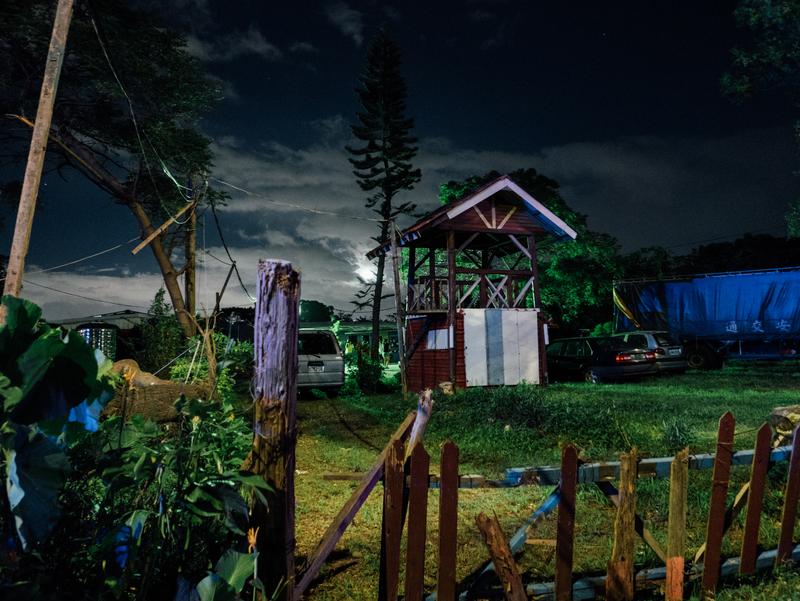
The Sanying Tribe signed a lease with the state-owned property agency for a 3.4 hectare piece of land beside the Sanxia Taipei National University campus, just a few minutes’ drive away from the original settlement location. The first phase of the lease is 20 years. After its expiration, the residents are still given priority to take over the tenancy, making the arrangement equal to a permanent lease.
At present, an estimated 42 households comprising 200 people are set to move to the new settlement. Each household will have a light steel frame house available in large, medium, and small sizes — at 36 ping (119 square metres), 28 ping (93 square metres), and 18 ping (59 square metres) respectively.
According to initial estimates, the cost of each house is around 1.5 million NTD ($49,700 USD), including the cost of laying underground foundations. In other words, residents have to raise 500,000 NTD ($16,500 USD) on their own, the next 500,000 NTD would be loans from the bank with the New Taipei City government acting as guarantor on behalf of the residents, and the remaining 500,000 NTD would be borne by the New Taipei City government.
“It’s equivalent to us paying 2,000-plus NTD ($66 USD) a month and, after the bank loan is paid off, a monthly rental of 600-plus NTD ($20 USD) to the state-owned property agency,” said Ah-Li (阿里), secretary of the Sanying Tribe. Simply put, the indigenous residents only need to return the bank loan and pay an inexpensive rent to legally stay in the resettlement compound for the long term. The old settlement in the water catchment area will only be demolished after the residents are resettled.
Compared to the traditional public housing model where residents only have to pay rent, the 333 Model has no precedent to follow and no legal basis, and requires the tribespeople to foot two-thirds of the construction costs (i.e. the self-funded portion and the bank loan which has to be repaid). Why opt for such a complicated method?
“We don’t like living in social housing, where you face restrictions whenever you want to renovate your own house,” says Chen Mei-Lan. They hope that the new settlement can be adapted to suit the indigenous people’s ways of life, possess the spirit and distinctive identity of the indigenous tribespeople, and be compatible with the concept of self-reliance. OURs secretary-general Peng Yang-kae (彭揚凱) stresses that the 333 Model is a compromise that both the tribe and city can agree on. It allows the tribe to maintain a degree of autonomy while not being burdened by excessive costs, and allows the city to sidestep procurement restrictions, because it subsidizes less than 50 percent of the project.
Riverbank settlements like The Sanying Tribe’s riverbank settlements, however, have long had their share of detractors: “Since the settlements are illegal, why don’t they have to leave?” When the tribe moved to the 333 Model, the question became: “Since the settlements are clearly illegal, why is the city using taxpayers’ money to help them build their homes?”
Ah-Li admits that when faced with such criticism, they initially could not provide a good answer. However, under the 333 Model they can now openly answer, “We leased the land using our own money; we built the houses using our own money too.”
Other than those who cast doubt on why they could rebuild their settlement, there were others who asked why they did not stay put in the original settlement. Radical elements of the indigenous movement would even ask “Why not continue the struggle and fight for the right to remain on the land, instead of compromising and even paying rent to the government?”
Chen Mei-Lan was slightly exasperated when she explained that they would definitely fight to the end if they could remain in the original settlement. However, the tribe had to relocate and seek refuge when a typhoon came around. As climate change intensifies, the tribe would not be able to bear the risks of future natural disasters, and have no choice but to resettle elsewhere. They believe that, at least for now, the best solution available is the 333 Model.
With the preservation of tribal autonomy as its premise, the significance of the 333 Model lies in minimising the cost borne by the tribe and sharing the cost burden with the city and the banks. However, this does not mean funding comes exclusively from these three parties; a large portion of the expenses for rebuilding the Sanying and Xizhou settlements came from the public.
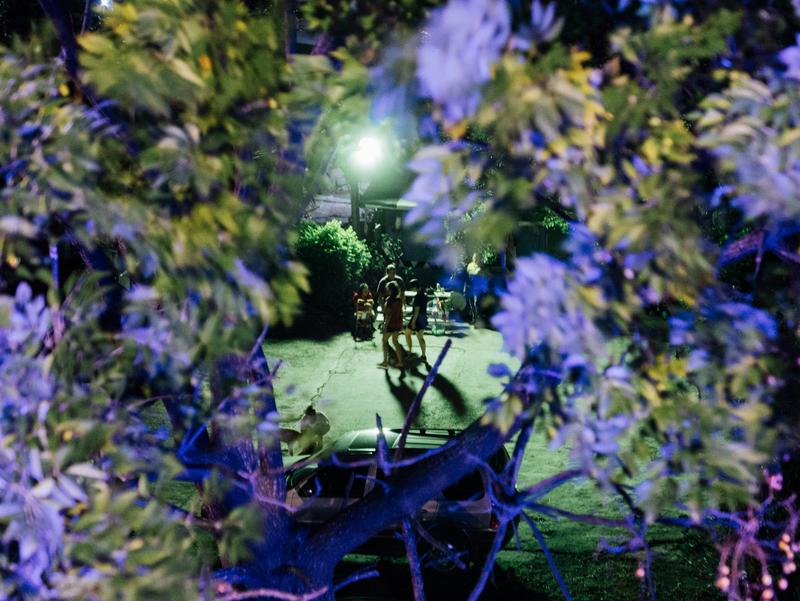
The chairman of Pegatron Corporation, Tung Tzu-hsien (童子賢), donated approximately $30 million NTD ($1 million USD) to the Sanying and Xizhou tribes to supplement their self-raised funds and pay for building supplies. Even after financial assistance from external parties, there remains a shortfall of several million NTD, and Chen Mei-Lan says “We still hope that the (New Taipei City) Indigenous Peoples Department can help pay a little more, or allow the banks to loan us a bit more.”
In September 2015, public works and foundations for the homes were completed, but the banks balked at giving out loans to the tribespeople, and the project stalled. That led the New Taipei city government to step in, and act as a guarantor on behalf of the tribe. Work resumed in June 2016 with a commencement ceremony at the resettlement compound, officiated by mayor Eric Chu himself.
However, the Sanying Tribe faced new problems in the contracting process. As there was no open tender for the housing construction in the beginning, the tribespeople had differing opinions on the choice of contractor, resulting in a delay on the construction works. The municipality did not intervene much in the early stages as it believed that the housing works should be undertaken independently by the tribe, but the tribe’s internal differences remained unresolved. The tribe, the city, and OURs eventually had to appoint representatives for a project committee to resolve the contracting issue as quickly as possible and complete the construction according to plan by March 2017.
Coming from their hometowns 30 years ago to reside in the cities, after countless demolitions, street demonstrations, negotiations with the city and resettlement costs, the Sanying Tribe are finally reconstructing their settlement under the 333 Model, and have opened up new possibilities.
According to Chiang Yi-Hao, because Taiwan has a very high rate of home ownership, land rights have to be associated with property rights to attract public sympathy. Informal housing like the Sanying Tribal Settlement, which violated building codes and to which the tribespeople did not possess property rights, were easily marginalised in debates on residential rights. The mere fact that the Sanying Tribe is able to “go from illegal construction to reconstruction” and “build first and tear down later” means that the government has recognized the right to live in informal housing.
If the Sanying Tribe’s resettlement is successful, and the compound’s operations run smoothly for the next few years, Chiang believes that Sanying Tribe will not only be an important milestone in the struggle for informal housing, but also broaden Taiwan’s imagination regarding public housing, and to an extent debunk the excuse repeated by the government that land is hard to find and costs are too high when it comes to social policy. “The example of Sanying shows that there is still a lot of state-owned land, and as long as it is affordable enough, I believe that lay people would not reject housing slightly further from the city centre,” says Chiang.
As the Sanying Tribe strives to forge a different path, all parties will be keeping a close eye on whether other informal settlements will follow the same route, and whether the 333 Model will allow the tribe to rebuild their settlement successfully.
The read the Chinese version, please click:〈台灣第一個都市型部落誕生:三鶯部落「333模式」的異地重建想像〉。
深度求真 眾聲同行
獨立的精神,是自由思想的條件。獨立的媒體,才能守護公共領域,讓自由的討論和真相浮現。
在艱困的媒體環境,《報導者》堅持以非營利組織的模式投入公共領域的調查與深度報導。我們透過讀者的贊助支持來營運,不仰賴商業廣告置入,在獨立自主的前提下,穿梭在各項重要公共議題中。
今年是《報導者》成立十週年,請支持我們持續追蹤國內外新聞事件的真相,度過下一個十年的挑戰。

